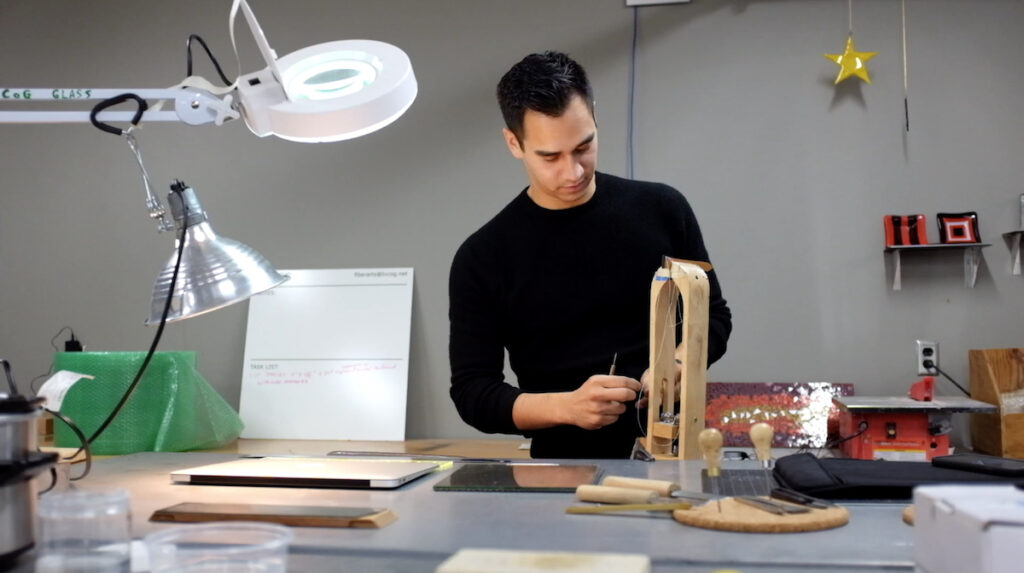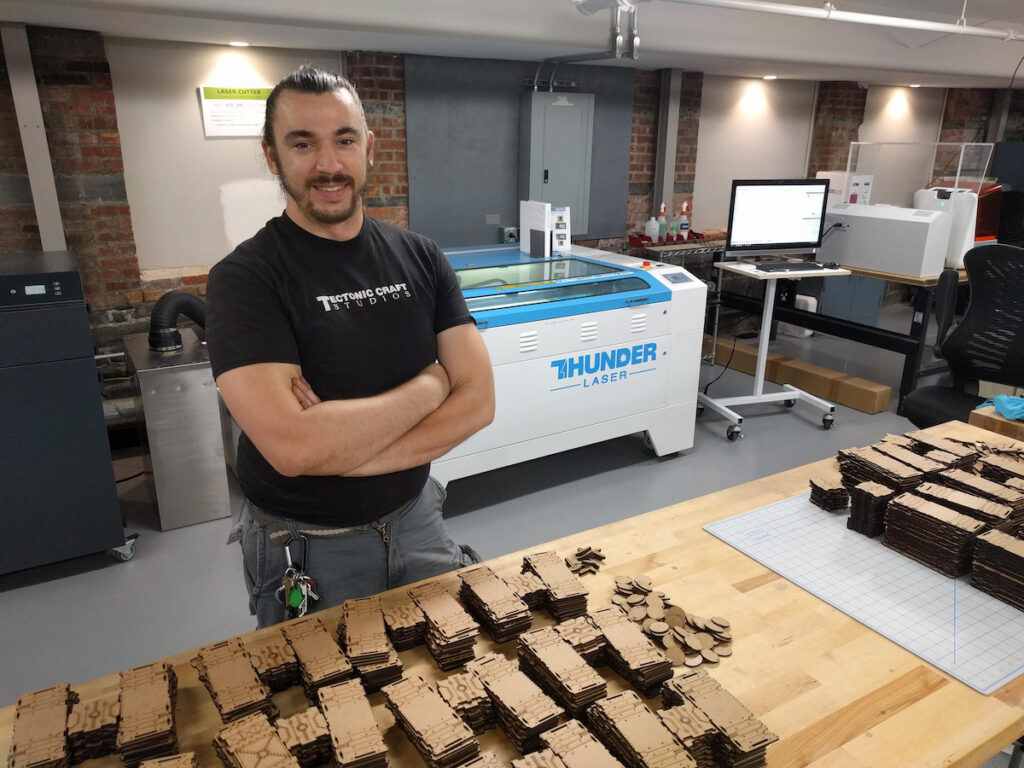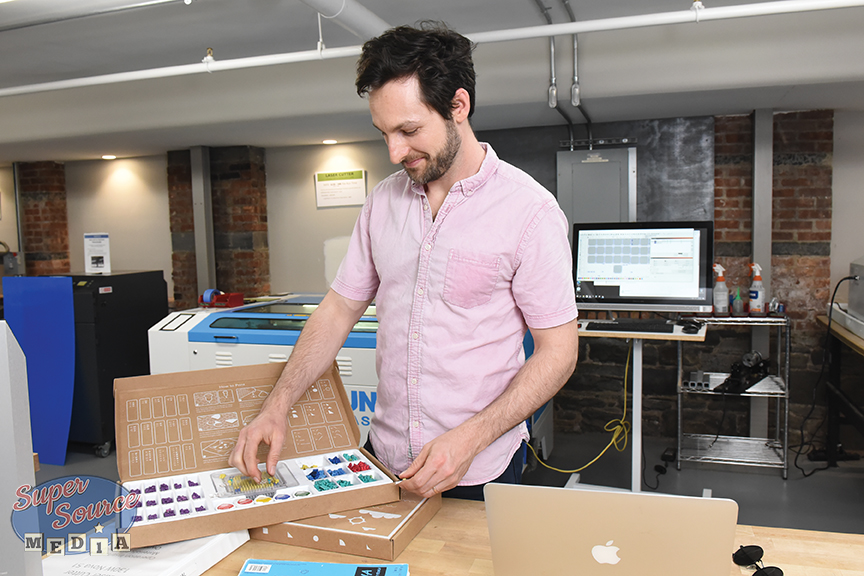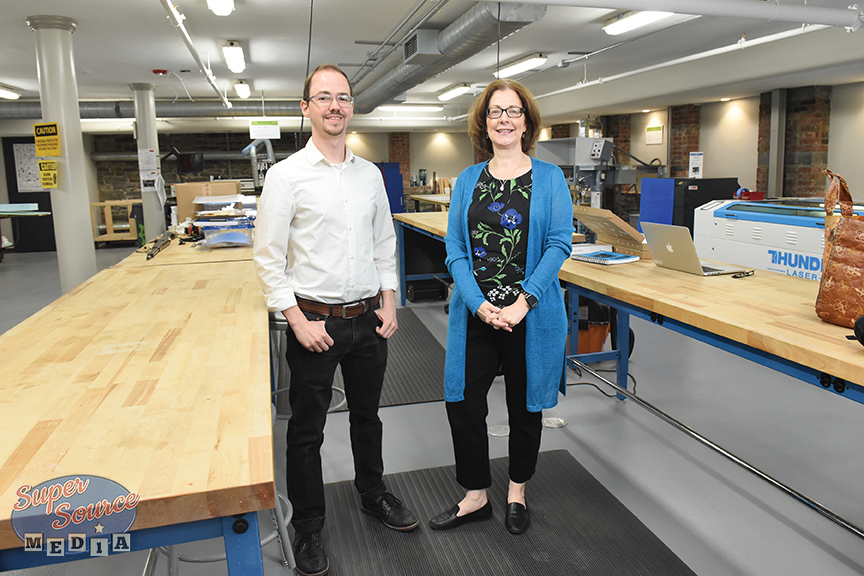TVCOG: The Brain Belt’s Buckle
PHOTOS BY LINDSEY FISH, SUPER SOURCE MEDIA UNLESS NOTED

The Capital Region’s status as a “brain belt” in the country’s industrial and scientific innovation economy wouldn’t hold up without the connections the Tech Valley Center of Gravity (TVCOG) makerspace has been facilitating for the past decade.
How We Became a Brain Belt
In the 1800’s the region was a hub for manufacturing everything from paper to iron and clothing.
Two hundred years took its toll on the industry however, and by the early 2000’s only a small fraction of those living in the region were employed in manufacturing.
To offset the job losses, between 2004 and 2008 more than 4,000 jobs in high tech industries were created in the Capital Region. The growing technology sector was attracted to the area’s pool of skilled workers educated by a system of advanced universities.
Every Belt Needs a Buckle
By 2013, the region had become known as the Tech Valley. We were a brain belt without a buckle.
To continue funneling in the skilled workforce that these companies were looking for, while also creating the next generation of entrepreneurs needed to rebuild a robust economy, it was vital people connect with each other.

That’s when the Tech Valley Center of Gravity opened, expanding into their current location in 2015. The 15,000 sq. ft. building in Troy houses nine maker zones filled with $200,000 of fabrication equipment, meeting areas, and office space. The electronics equipment, 3D printers and CNC machines here are joined by a wood shop, metal shop, and fiber arts studio that give their more than 200 members the opportunity to mend the skills gap between education and real-world applications.
“A lot of people at the time were talking about the ‘skills gap’ because the hands-on experience graduates needed was not there. We still need to improve that,” said Dan Falkenstrom, Facilities and Incubator Director, about the Center’s growth.

Making Progress Practical
In an increasingly digital world, remembering that it is also a physical world is vital to solving today’s most pressing problems.
“We still live in a world of physical things and need to know how to create physical things,” said Falkenstrom. “Someone who is studying engineering, for example, can still have no idea how to solder. They have the knowledge and the ideas but they need to connect with people who know how to physically bring things to life.”
Others, like Daryian Rhysing, had hands-on experience but needed business know-how. With assistance from TVCOG, Rhysing, a former aircraft mechanic who invented a new electrical Interconnecting Clamp, went on to open United Aircraft Technologies and was recently awarded $1.1 million from the US Army for his clamps’ usage in vertical lift aircraft.

Innovation for All
The TVCOG incubator program provides targeted mentorship, coaching, and guidance (in the form of risk-mitigation strategies and referrals) so startup projects can get off the ground.
“Going it alone, people may not realize they’re going down the wrong path,” said Falkenstrom.
Through initiatives like Innovate 518 , TVCOG also helps inventors find funding and tax incentives.
Their “Maker-in-Residence” scholarship program gives those who might otherwise find the costs prohibitive, free access to equipment and resources, while also awarding them a financial stipend and free training.

Hatching Next Gen Entrepreneurs
In her newly appointed position, Executive Director Michele Madigan is planning to open access to TVCOG’s resources to even more in the community.
Before taking the post, Madigan was Saratoga Spring’s Commissioner of Finance and the Financial Literacy Coordinator at the Saratoga Springs Public Library.
A firm believer that the city was “ripe for an industry-led non-profit makerspace,” during her tenure, COVID threw a wrench in things.

At TVCOG, the increase in the use of virtual communications that has resulted however, has helped keep technological progress in the region moving forward.
This year, TVCOG was again awarded a $625,000 grant from the Empire State Development Division of Science, Technology, and Innovation (NYSTAR). With potential additional funds from the American Rescue Plan, they are looking to add another full-time employee and a mobile makerspace program for kids in K-12.
Currently at TVCOG’s “THINQubater” kids’ zone, there are STEAM-powered activities for kids ages 4 to 12.
For more information on membership, incubators, and programs go to www.tvcog.net.